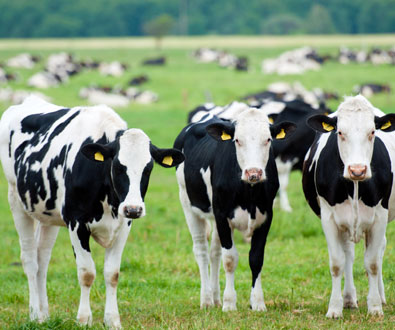
6 May 2015
Exponential population growth and changing climate patterns are creating unique challenges for the agriculture industry. To continue to address global food needs, many researchers, breeders, and farms are turning to genomics, or DNA science, to optimize production.
As the global leader in genomic solutions, Illumina aims to unlock the power of the genome to improve human health across the globe – in applications as diverse as food security to cancer care. Illumina offers two primary technologies to support the agrigenomics market: next-generation sequencing and genotyping. Each technology addresses the unique needs of the agriculture community, in research and commercial settings.
Mike Thompson, PhD, Illumina’s Director of Market Development for Agrigenomics, explains how Illumina technologies are used in various agricultural markets.
How does genomics increase understanding of genetic diversity in plants and animals?
Next-generation sequencing (NGS) can be useful to agricultural researchers who want to understand the complex genomes of crops or livestock, and can be used to develop a reference genome sequence from which to develop future tools for analysis of genetic traits in these plants and animals. Illumina’s NGS technology can also be used to sequence the genomes of multiple representatives of a species and discover new genes and variants associated with different traits or characteristics, or for RNA sequencing to study gene expression in these species.
Once a sequence or set of relevant characteristics have been identified, Illumina arrays can be used to genotype many organisms of a species to understand the relevant genetic traits associated a particular characteristic. Illumina offers products for many plant and animal species, as well as custom products for any species to meet the needs of researchers and producers.
How are Illumina technologies used in relation to crops?
In research, NGS has been used extensively in crops to understand genome architecture and expression. Many crop species have large complex genomes that require the power of NGS to decipher. Another application is to improve understanding of viruses infecting crops and help prevent spread of infection.
Seed companies and academic institutions alike can use genomic information to accelerate breeding programs by selecting for combinations of genomic markers associated with desirable traits such as drought tolerance, disease resistance, or crop yield. In doing so, seed lines are developed that can improve farming productivity, particularly as climate change threatens more arid regions of the world.
Examples of Illumina customers doing this type of work include commercial seed companies, like Syngenta, and academic researchers and field-based teams working on crops not typically farmed industrially in the developed world, such as a group working with cowpea led by UC Riverside researcher Tim Close, PhD.
And for livestock?
Illumina array technology is now mainstream for commercial breeding in the dairy industry and is also beginning to take hold in many other economically important animal species. Genome-wide arrays are utilized at the birth of an animal to predict the future performance of that animal. The array is a better predictor and much faster than traditional progeny testing. Better performance prediction is enabling better decisions that produce higher profits for breeders and producers. Examples of customers include service providers like Zoetis and GeneSeek and individual ranches like Martin Dairy and Three Trees Ranch.
Genetic sequencing can be used not only to understand the characteristics of the livestock or animal, but also the characteristics of viruses that infect it or bacteria that live on or in it. These tools can be helpful for researchers seeking to understand and stop outbreaks of deadly diseases infecting animal populations, such as the porcine epidemic diarrhea virus (PEDv), because the resolution of NGS enables researchers to pinpoint how viruses mutate over time, helping to understand transmission patterns and develop potential treatments. Similarly, the bacteria colonizing the gut of livestock animals can be sequenced and analyzed to enable wide-ranging research into optimizing animal feed and diagnosing infections, among other applications.
How is genomics being leveraged to improve global nutrition?
Illumina launched the Agricultural Greater Good Initiative in 2011 as a way to catalyze use of genomics in addressing malnutrition and poverty in the developing world. The award spurs critically needed research aimed at improving sustainability, productivity, and nutritional density in crop and livestock species important in these regions of the world.
This year’s award recipient, African Orphan Crops Consortium (AOCC), is using Illumina products to sequence the transcriptomes of 50 species of crops commonly grown in backyards and on small plots by populations across Africa, and will be using the information to develop breeding tools aimed at increasing the yields of these crops.
Notable past projects have included a program to create breeding tools and training programs for rice growers led by the International Rice Research Institute, and a USDA-led effort leveraging the International Goat Genome Consortium array, which identified traits associated with goat heartiness in dry climates to improve breeding programs in Africa, the Middle East, and India.


